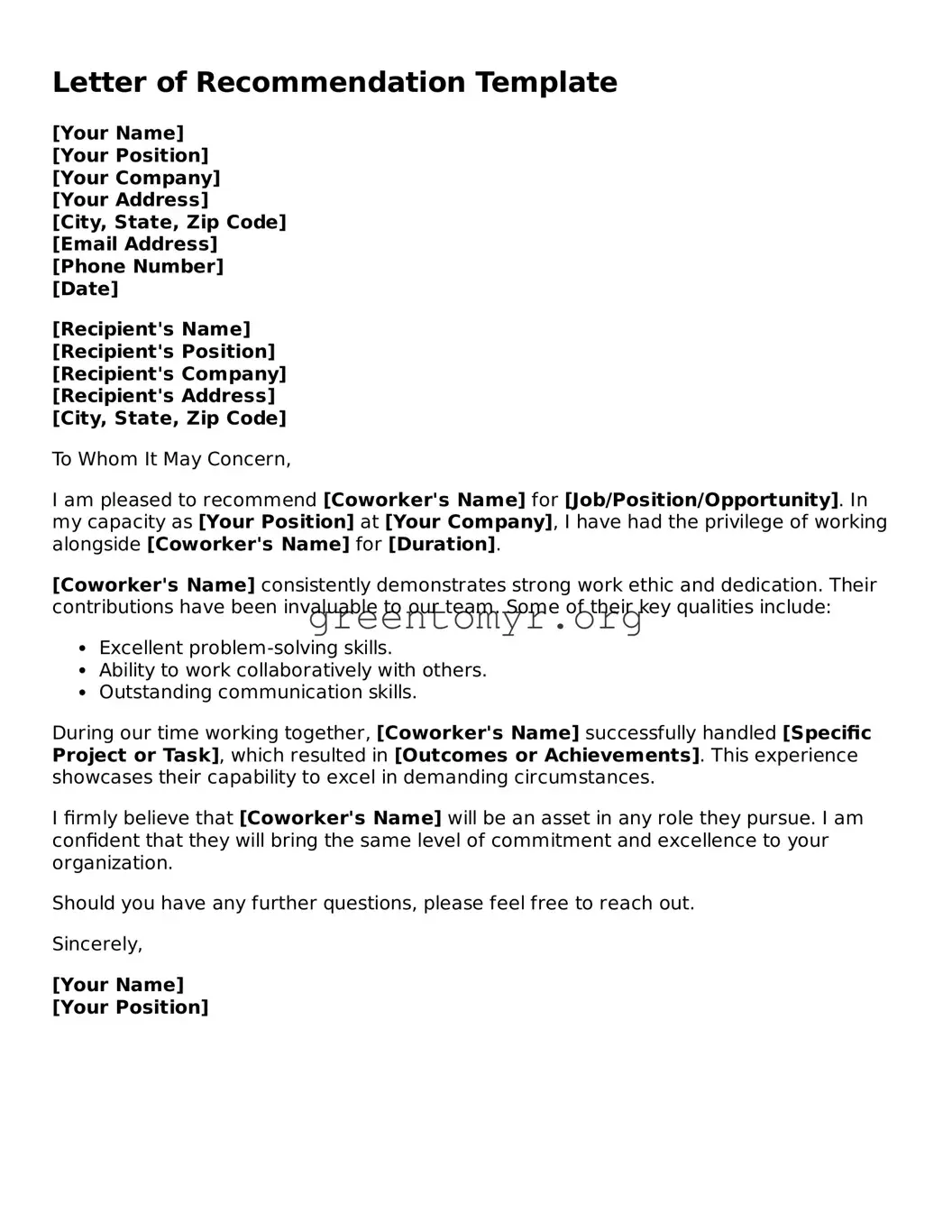Letter of Recommendation Template
[Your Name]
[Your Position]
[Your Company]
[Your Address]
[City, State, Zip Code]
[Email Address]
[Phone Number]
[Date]
[Recipient's Name]
[Recipient's Position]
[Recipient's Company]
[Recipient's Address]
[City, State, Zip Code]
To Whom It May Concern,
I am pleased to recommend [Coworker's Name] for [Job/Position/Opportunity]. In my capacity as [Your Position] at [Your Company], I have had the privilege of working alongside [Coworker's Name] for [Duration].
[Coworker's Name] consistently demonstrates strong work ethic and dedication. Their contributions have been invaluable to our team. Some of their key qualities include:
- Excellent problem-solving skills.
- Ability to work collaboratively with others.
- Outstanding communication skills.
During our time working together, [Coworker's Name] successfully handled [Specific Project or Task], which resulted in [Outcomes or Achievements]. This experience showcases their capability to excel in demanding circumstances.
I firmly believe that [Coworker's Name] will be an asset in any role they pursue. I am confident that they will bring the same level of commitment and excellence to your organization.
Should you have any further questions, please feel free to reach out.
Sincerely,
[Your Name]
[Your Position]
